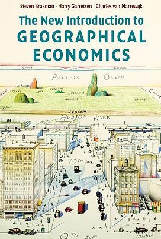

Theoretically, the traditional economic approach to the dispersion process is found in the neoclassical growth model in which interventions in favor of the less developed regions are not necessary. Re-addressing this issue has led to more sophisticated regional policy-making strategies from simple core-periphery stories to the idea of sustainable and inclusive regional growth in the EU (McCann & Ortega-Argilés, 2015), place-based regional policy in both developed (Dąbrowski, 2014) and developing countries (Shenoy, 2018), and place-sensitive (Iammarino et al., 2018) policies. A wide range of major international organizations in recent years also put the spotlight on the underlying rationale, the functions, and the intended consequence of local and regional development strategies WorldBank ( 2009) EuropeanCommission ( 2017) OECDb ( 2018). The main reason comes from the fact that during the second half of the 20 s, non-core regions began to account for an increasing share of economic growth across Europe and many OECD countries. Also, empirical evidence indicates that structural changes in inequality from individuals to groups results in the support of extreme political parties by inhabitants of lagging regions to express their dissatisfaction (Bussolo et al., 2018).Ĭonsequently, the rising populism all over Europe (Ballas et al., 2017), anti-EU voting (Dijkstra et al., 2018), and Brexit superiority vote (Toly, 2017) are the very backlashes of such regional inequalities.Īttention to regional development strategy was revisited during the global financial crisis in 2008, and policymakers began to think of the most appropriate ways to boost growth and development. In the case of the European community, economic integration has not successful enough to reduce within-country disparity (Charron, 2016), intensifying it even after financial crises and sovereign debt period (Fratesi & Rodríguez-Pose, 2016) and most recently COVID-19 pandemic (Irlacher & Koch, 2021). Since 2011, there have been signs of reducing disparities within countries but it remains high in several respects such as significant regional productivity gap and the concentration of income and job opportunities in major cities and specific regions (OECD, 2018a). Global development has been accompanied by a paradoxically parallel status, namely, “The Great Convergence” between countries (Baldwin, 2016) and at the same time “The Great Divergence” within countries (Moretti, 2012) among several industrialized economies. During the 1990s and early 2000s, strong empirical evidence is available to support the fact that even though income disparity among countries has somewhat declined (Sala-i-Martin, 2006), this has not happened within countries and the gap between the poorer regions and ones with higher income has increased even further. Since the late 1970s, the “new geography of jobs” shows that globalization and technological changes have affected many affluent rural areas through job losses, lower per capita incomes, and labor force participation compared to the national average (Moretti, 2012). Although aggregate indicators suggest a positive image in macroeconomic performances, at the regional level, they show a different perspective in which some groups are lagging behind (Bussolo et al., 2018). Therefore, if this policy is to be the basis for creating regional objectives, it should provide a structure for simulating external knowledge links and distinguishing the nature of the various related industries.Ĭonvergence failure, characterized as inequality within countries and regional disparity in terms of income and employment, has received much attention in recent years in developing and developing countries (Iammarino et al., 2018). However, this approach faces multi-level challenges in lagging-behind regions, including the lack of critical mass about low diversity and the gap in the knowledge base between lagging-behind and affluent areas. Creating regional advantages, as a policy in evolutionary economic geography, has provided diversified policy options for lagging-behind regions.
Industrial agglomeration, as an essential element of the new economic geography, has restricted the potential for policy-making in lagging-behind regions. The present study focuses on the policy proposals in the context of new economic geography and evolutionary economic geography for lagging-behind areas. Lagging-behind regions, as an example of the failure of convergence in a country, has attracted the attention of many researchers who are attempting to adopt applicable policies and strategies to overcome the problem of low growth paths.


 0 kommentar(er)
0 kommentar(er)
